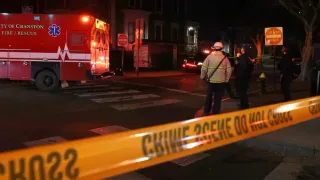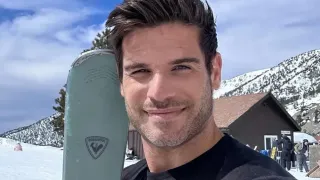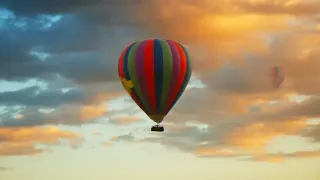March 12, 2017
Ron Amato: Seeking the Soul - The Box Series
Joe;l Martens READ TIME: 7 MIN.
Ron Amato was born and raised in Brooklyn and still lives there. He has become one of the rarities of that world of imports. Another rarity? His photographs are powerful and really speak for themselves, he is one of those rare artists, who needs little explanation about interpreting his works. Like classic sculpture, his male images beg you to examine them: Beautiful, sensual, powerful and yet like those classic sculptures of antiquity, oddly chaste.
This is his story.
When did you first start taking photos, or catch the photo bug, if you will?
You know, I don't remember how it started exactly. My father had a lot
of little cameras around, little Kodaks and Polaroid cameras. I must have been making photos with them, because my parents bought me this kind of kit, everything was plastic, it was what we used to call an instamatic camera. They don't call them that any more, but it had a little instamatic camera, a little plastic enlarger, these tiny little chemistry trays, a whole boxed kit. It was like, "Here, you're a photographer now."
I joined the camera club around sixth grade, which was together for a very short time, like one academic year. I made color prints there, not a lot, but with the guidance of the faculty member who ran the club. I always enjoyed it and throughout high school I made photographs, but never really thought of it as a career. My father was an accountant and I came from a family where the arts were not really something prevalent in the household
and it definitely was not something thought of as a viable career option.
Practicality was such a big part of what was necessary to survive back then. The arts weren't as accessible as they are now, let alone thinking about them as a regular source of income.
I went into college without knowing what I wanted to do, so it didn't
even enter my mind to do anything in the arts. I had to pick something, or felt pressured to pick something and it really wasn't working for me at all. I took some elective photography classes and ended up leaving college and going to a photography vocational school around 1981.
I'm so impressed by your current series. There is something about the symbology around the boxes that is intriguing. They represent so many different concepts in my mind: Constraint, expectations, coming out and rebirth. What was the impetus for the concept?
It's interesting, but I've realized that constraint is a theme throughout a lot of my work. I had worked on a project for a very long time called "Armor," and it has men wrapped in fabric and rope. It took us four years and I did it very slowly. I was getting tenure at my other job at the time, so it was a very busy period for me and I didn't shoot very often. I've been teaching for 14 years now, and one of the big restrictions that I have with my students, is that I don't want to see studio boxes in photographs. I kind of constantly tell them the boxes are for support and you shouldn't see them - my caveat was - unless there was a real reason to see the actual box in the photograph. I thought I should give them an example of what that might be...Why would you see that box? At the same time too, I was looking for a new project and started to think about the concept.
I work at the Fashion Institute of Technology in New York City and the studios I shoot in there, have tons of these boxes there for the students to use as support. My idea was, "If I was going to use a box to communicate a concept, what would it be?" I thought about empowerment and using it as a pedestal, but I was also thinking about how it could have a negative connotation around putting someone in a box, figuratively... It could be thinking outside the box, too. We have these phrases around the concept of boxes; like you can trap someone in a box, or you can also place something precious in one... These things were all banging around in my head. I did a couple shoots where I had models standing and posing on them, doing more athletic, gymnastic poses and it really wasn't getting me where I wanted to go. Then, I had the large boxes made, so that I could put bodies inside the box and it really took off after that.
You found your muse in the medium.
Basically, I realized I could express a lot of different stages of my gay life, personally. And, therefore, could hopefully relate that to many other people.
It's sort of a universal path we have all followed: A feeling of isolation, adversity and conflict, all of those of things, and then as we mature, hopefully, becoming healthier. (Laughs) Coming out does a lot for people, and it is difficult to explain the experience to someone who hasn't lived this life... what pre-coming out and post-coming out is really like.
I interviewed Dustin Lance Black recently, and one of the things we discussed was around the coming out process. It's unique to the LGBT community, because more often than not there is no guidance from a family standpoint, because they have no experience of it to share. We must seek out our "tribe," so to speak, for that support and connection.
That's true and once I hooked in to the idea of using the box as a visual metaphor for the different stages throughout life - I should say my life, because I don't want to speak universally for everyone - I realized that I could really express these things with this common object. That's been the most fascinating part of this for me. The prop is the suggestion, but the emotion behind it is really the outcome. The models knew it, they got exactly what I was going for right away.
One of the things that I find very intriguing about both the Box and the Armor series, is that they all have this sense of emergence. It really reminds me of Michelangelo's unfinished soldier series, there is a tension in the unfinished sculptures that is so visceral. It's like they are fighting to break free of the marble.
It's interesting that you should bring that up. Those works completely influenced the "Armor" series. I'm so happy that you see that. I teach a class in Florence every year and we study abroad at Accademia [Gallery] and the Armor series in particular, is influenced by a visit in 2009 when a Robert Mapplethorpe retrospective was in the temporary exhibit right next door to the main gallery. There was this wonderful juxtaposition of Michelangelo's sculptures and Mapplethorpe's photography. I came home and immediately made the first image from the "Armor" series in response to that experience.
There was a fascinating retrospective at the Muse d'Orsay in Paris a while back called "Masculine/ Masculine." It was all about the male nude through history. I bring it up because it was so fascinating to see the male nude placed in a historic context - there has never been a retrospective until the Leopold Museum in Vienna in the autumn of 2012. Female nudes have been on display regularly, but not male. I find that truly amazing.
Hunter O'Hanian, who wrote the forward for the Box Series book, is a friend and colleague of mine and was the director for the Leslie Lohman Museum of Gay and Lesbian Art for a number of years. He is the executive director now at The College Art Association and discusses in the forward his take, not only on my work, but the whole idea of the male nude throughout the history of art.
For many, any male nudity is controversial. Seeing a penis, for many, crosses a line into something else, some people are truly horrified by it. I've watched the expressions of the people who page through my work and seen how intense their reactions can be. It would be a great study to do sometime. An anthropological or sociological study around what the predispositions are to seeing male genitalia, and what the reaction has been over the years. It's all about context. The content of the magazine sets the context in which people view it.
"The Box" is available for pre-order. To see much more of Amato's work, go to ronamato.com. For more of this interview, go to ragemonthly.com
 Copyright Rage Monthly. For more articles from Rage visit
Copyright Rage Monthly. For more articles from Rage visit 





